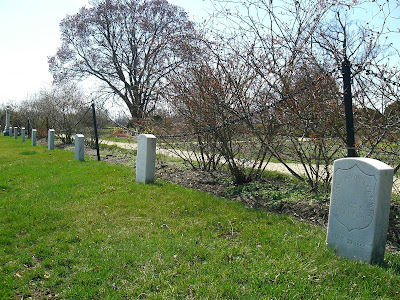 Above: L'Enfant's planned capital.
Above: L'Enfant's planned capital.A few weeks ago I was speaking with a friend of mine who is enrolled in the history graduate program at Yale. He and I were discussing the merits of writing biased history - that is, writing a historical essay or book that makes plain the author's feelings about the event or person being described. This could mean anything from applying anachronistic moral standards to an historical event (e.g. 'the curse of slavery was thus brought to the shores of Virginia...'), or just making it plain how you feel about historical actors (e.g. 'In a characteristically bold stroke, Lee brilliantly...'). I was of the opinion that I would rather the author be up front about his or her opinions, rather than attempt to write an "unbiased" work that would ultimately convey the author's views in an indirect manner while feigning objectivity.
As a result, while perusing books about the history of the Washington area, I settled on two tomes from the 1930's:
Washington: A Not too Serious History by George Rothwell Brown, and
Virginia: The Old Dominion by Matthew Page Andrews. Both of these books reflect the time period in which they were written via their open editorializing of their subject material. Brown, for example, writing concerning the election riots I discussed in an
earlier post, said that "[the riots] have cured many of any desire for a repetition of such scenes, and have convinced others that perhaps the preservation of a calm and serene atmosphere for the deliberations of Congress and the labors of the President is worth more than the right to vote." We know where Brown stands on the issue, so we can take his presentation of the subject with a grain of salt, knowing that he is likely to frame the problem in such a way as to make his reader take his side.
Andrews'
Virginia is similarly up front about the opinions of the author. For example, as I was reading about the design of the Federal City, Andrews seemed to be taking pains to emphasize the contributions to the city's planning of men other than Charles L'Enfant, especially Thomas Jefferson. Jefferson, it seems, gave the city planners the layouts of several European cities, as well as Annapolis, Maryland, to use as models. Andrews claims that this was an important contribution, and that in many respects, the plan for the District resembled that of Annapolis. Not being an expert in architecture or city planning, I might be inclined to take the author at his word and believe that Jefferson powerfully influenced the design of the capital.
However, as I mentioned, Andrews seems to have really liked Jefferson. After looking further into the matter, it seems that Andrews was inclined to believe most anything Jefferson did to be good, right, and true. Indeed, discussing Jefferson's decision to leave President Washington's cabinet, Andrews declares Washington to have been an autocrat. A quick glance at Encyclopedia Brittanica further confirmed that Annapolis was not a particularly important influence in the design of the District, and that L'Enfant drew much more inspiration from Paris and other European cities. Had Andrews been more circumspect in his allegiance to Jefferson, I may well have never given the matter a second thought. As it stands, it seems President Washington's suggestion that the White House be a mile from Congress was ultimately just as influential.
Sources: George Rothwell Brown,
Washington: A Not Too Serious History (Baltimore: Norman Publishing Company, 1930), 215.
Matthew Page Andrews,
Virginia: The Old Dominion (Richmond: Dietz Press, 1949).
Photo Source: University of Wisconsin Digital Collection: http://digicoll.library.wisc.edu/History/data/images/NolenMadsn/reference/WashDCr.jpg





















 Steven Decatur (Left) v. James Barron (Right)
Steven Decatur (Left) v. James Barron (Right)






